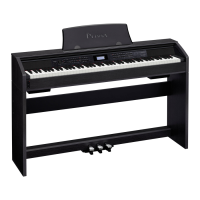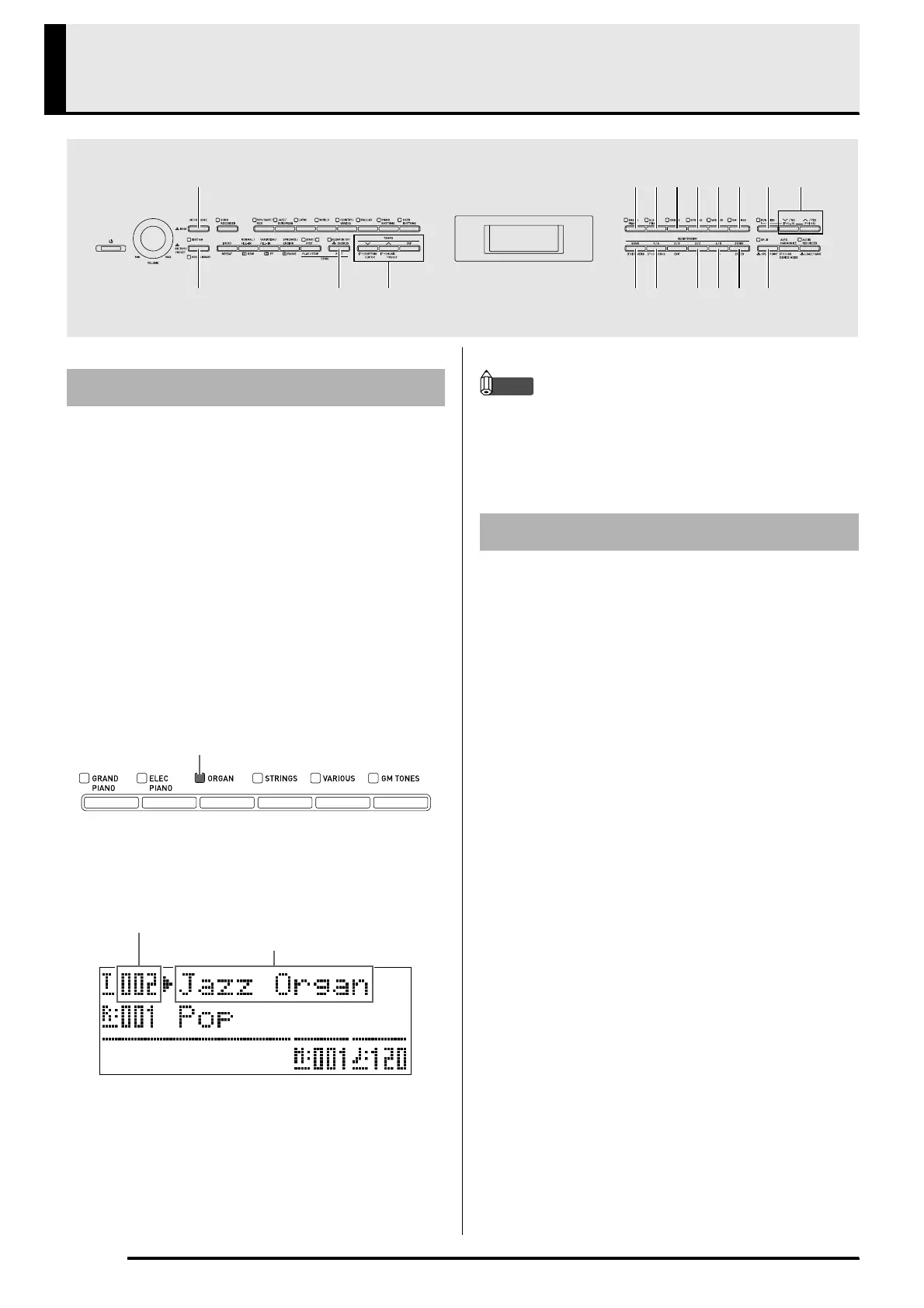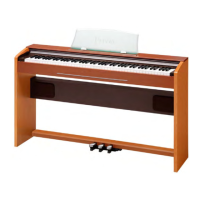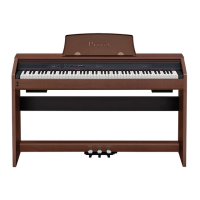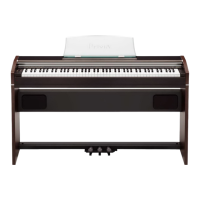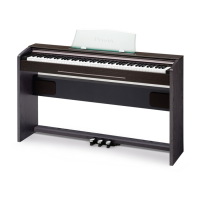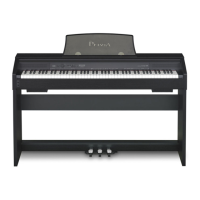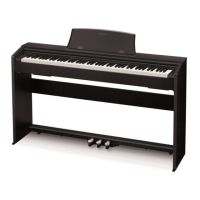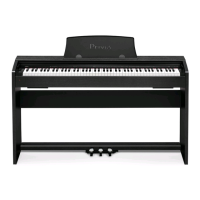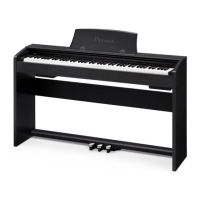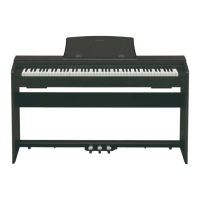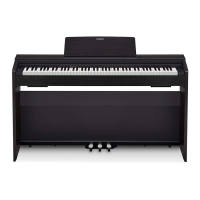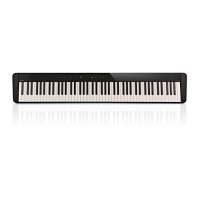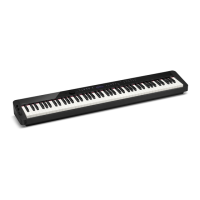E-8
Using Built-in Tones
Your Digital Piano has 250 tones, divided into six
groups.
• For more information, see the “Tone List” (page
A-1).
• The Digital Piano has built-in demonstration tunes
that highlight the different characteristics of tones.
For more information, see “Playing Tone Demo
Songs” (page E-23).
1.
Use the “Tone List” (page A-1) to look up the
group and the number of the tone you want to
select.
2.
Use the
cm
to
cr
(tone groups) buttons to
select the group you want.
Example: To select the ORGAN group
3.
Use the
ct
(w, q) buttons to select the
tone you want.
Example: To select “002 Jazz Organ”
NOTE
• Pressing q and w at the same time will jump to
tone 001 of the currently selected group. Holding
down either button changes the tone number at high
speed.
• See page E-44 for more information about scrolling.
You can layer two different tones so they play at the
same time when you press a keyboard key.
• The first tone you select is called the “main tone”,
while the second tone is called the “layered tone”.
1.
Select the main tone.
Example: To select GRAND PIANO MELLOW in the
GRAND PIANO group, press the
cm
(GRAND PIANO) button and then use the
ct
(w, q) buttons to select “006 GRAND
PIANO MELLOW”.
cm cn co cp cq cr ct
dq
cs
bt dn do dpdk dl
3
ckbn
Selecting a Tone
Lit
Tone number
Tone name
Layering Two Tones
PX780_e.book 8 ページ 2012年12月6日 木曜日 午後2時26分
